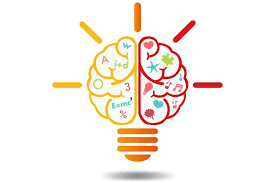DỊCH HOÀN THIỆN ĐỀ THI IELTS READING VÀ GIẢI THÍCH ĐÁP ÁN:
Giving The Brain A Workout
Mental agility does not have to decline with age, as long as you keep exercising your mind, says Anna van Praagh.
Anna van Praagh nói: “Sự nhanh nhẹn về trí tuệ không cần phải suy giảm theo tuổi tác, miễn là bạn tiếp tục rèn luyện trí óc của mình.
A
Use your brain and it will grow – it really will. This is the message from neuropsychologist Ian Robertson, professor of psychology at Trinity College, Dublin and founding director of the university’s Institute of Neuroscience. His book, Puzzler Brain Trainer 90-Day Workout, contains puzzles which he devised to stretch, sharpen and stimulate the brain. The puzzles, from 'memory jogs' to Sudoku to crosswords to number games are all-encompassing, and have been specially formulated to improve each and every part of the brain, from visual-spatial ability to perception, attention, memory, numerical ability, problem-solving and language.
Hãy sử dụng bộ não của bạn và nó sẽ phát triển – nó thực sự sẽ phát triển. Đây là thông điệp từ nhà tâm lý học thần kinh Ian Robertson, giáo sư tâm lý học tại Trinity College, Dublin và là giám đốc sáng lập Viện Khoa học thần kinh của trường đại học. Cuốn sách của anh ấy, Puzzler Brain Trainer 90-Day Workout, bao gồm các câu đố mà anh ấy nghĩ ra để căng cơ, mài giũa và kích thích não bộ. Các câu đố này, từ 'khơi gợi trí nhớ' đến Sudoku, trò chơi ô chữ đến trò chơi số đều được bao gồm và đã được xây dựng đặc biệt để cải thiện mọi phần não bộ, từ khả năng không gian-thị giác đến nhận thức, sự chú ý, trí nhớ, khả năng tính toán, giải quyết vấn đề và ngôn ngữ.
B Professor Robertson has been studying the brain for 57 years, in a career dedicated to changing and improving the way it works. During this time there has been a remarkable paradigm shift in the way scientists view the brain, he says. 'When I first started teaching and researching, a very pessimistic view prevailed that, from the age of three or four, we were continually losing brain cells and that the stocks couldn't be replenished. That has turned out to be factually wrong. Now that we know that the brain is "plastic" – it changes, adapts and is physically sharpened according to the experiences it has.'
Giáo sư Robertson đã nghiên cứu về bộ não trong suốt 57 năm, với sự nghiệp cống hiến cho việc thay đổi và cải thiện cách thức hoạt động của nó. Trong thời gian này, đã có một sự thay đổi thế giới quan đáng chú ý trong cách các nhà khoa học nhìn nhận bộ não, ông nói. 'Khi tôi mới bắt đầu giảng dạy và nghiên cứu, một quan điểm rất bi quan đã chiếm ưu thế rằng, từ ba hoặc bốn tuổi, chúng ta liên tục mất đi các tế bào não và trữ lượng tế bào này không được bổ sung. Điều đó hóa ra lại sai sự thật. Bây giờ chúng ta biết rằng bộ não rất "dẻo" - nó thay đổi, thích nghi và được mài giũa về mặt thể chất tùy theo những trải nghiệm mà nó có.'
C Robertson likens our minds to trees in a park with branches spreading out, connecting and intertwining, with connections increasing in direct correlation to usage. He says that the “eureka” moment in his career – and the reason he devised his ‘brain trainer’ puzzles – was the realisation that the connections multiply with use and so it is possible to boost and improve our mental functions at any age. 'Now we know that it’s not just children whose brains are "plastic",' he says. 'No matter how old we are, our brains are physically changed by what we do and what we think.'
Robertson ví trí óc của chúng ta như những cái cây trong công viên với các nhánh vươn ra, kết nối và đan xen với nhau, với các kết nối ngày càng tăng trong mối tương quan trực tiếp với cách sử dụng. Anh ấy nói rằng khoảnh khắc “eureka” trong sự nghiệp của anh ấy - và lý do anh ấy nghĩ ra câu đố 'kẻ huấn luyện trí não' của mình - là nhận ra rằng các kết nối tăng lên cùng với sự sử dụng và do đó có thể tăng cường và cải thiện các chức năng tinh thần của chúng ta ở mọi lứa tuổi. "Bây giờ chúng tôi biết rằng không chỉ trẻ em mới có bộ não "dẻo"", ông nói. 'Cho dù chúng ta bao nhiêu tuổi, bộ não của chúng ta bị thay đổi về thể chất bởi những gì chúng ta làm và những gì chúng ta nghĩ.'
D Robertson illustrates his point by referring to Dr Eleanor McGuire’s seminal 2000 study of the brains of London taxi drivers. That showed that their grey matter enlarges and adapts to help them build up a detailed mental map of the city. Brain scans revealed that the drivers had a much larger hippocampus (the part of the brain associated with navigation in birds and animals) compared with other people. Crucially, it grew larger the longer they spent doing their job. Similarly, there is strong statistical evidence that, by stretching the mind with games and puzzles, brainpower is increased. Conversely, if we do not stimulate our minds and keep the connections robust and intact, these connections will weaken and physically diminish. A more recent survey suggested that a 20-minute problem-solving session on the Nintendo DS game called 'Dr Kawashima's Brain Training' at the beginning of each day dramatically improved pupils’ test results, class attendance and behaviour. Astonishingly, pupils who used the Nintendo trainer saw their test scores rise by 50 per cent more than those who did not.

1. Mua bộ đề gần 400 bài ielts reading - Dịch và giải chi tiết Chỉ 199k bao gồm toàn bộ đề trong bộ Cambridge ( từ bộ 1 -19) và nhiều đề thi thực tế ( xem danh sách 400 đề ielts reading tại đây). Xem bài mẫu tại đây, Bài mẫu 1, bài mẫu 2, bài mẫu 3. Giải đề bao gồm phần dịch bài đọc, dịch phần câu hỏi, giải thích chi tiết, ( chỉ có thể tải, in phần đề để luyện tập, phần giải chi tiết và dịch chỉ xem online).
>>>>>>> Đặc biệt tặng kèm Dịch và giải chi tiết bộ đề Ielts listening từ Cam 10-18 và tặng kèm hơn 300 đề Ielts thực tế ( không có lời giải chi tiết chỉ có đề và đáp án) ( khác với bộ 400 đề ở trên). Vui lòng điền thông tin theo form tại đây và thanh toán theo thông tin CK trong form.
2. Đặc biệt dành tặng 100 bạn hoàn thành buổi học thử miễn phí khóa học Ielts Speaking online 1 kèm 1, các bạn sẽ được tặng bộ đề 400k bài Ielts reading và bộ đề Ielts Listening bộ Cam từ 10-18 gồm bài dịch và giải chi tiết, giải thích từ vựng khó ( thời hạn sử dụng trong vòng 2 tháng). Xem thông tin khóa học Ielts Speaking online 1 kèm 1 và đăng ký học thử tại đây.
E Robertson's puzzles have been designed to have the same effect on the brain, the only difference being that, for his, you need only a pencil to get started. The idea is to shake the brain out of lazy habits and train it to start functioning at its optimum level. It is Robertson’s belief that people who tackle the puzzles will see a dramatic improvement in their daily lives as the brain increases its ability across a broad spectrum. They should see an improvement in everything, from remembering people’s names at parties to increased attention span, mental agility, creativity and energy.
F 'Many of us are terrified of numbers,' he says, 'or under-confident with words. With practice, and by gently increasing the difficulty of the exercises, these puzzles will help people improve capacity across a whole range of mental domains.' The wonderful thing is that the puzzles take just five minutes, but are the mental equivalent of doing a jog or going to the gym. 'In the same way that physical exercise is good for you, so is keeping your brain stimulated,' Robertson says. 'Quite simply, those who keep themselves mentally challenged function significantly better mentally than those who do not.'
G The puzzles are aimed at all ages. Robertson says that some old people are so stimulated that they hardly need to exercise their brains further, while some young people hardly use theirs at all and are therefore in dire need of a workout. He does concede, however, that whereas most young people are constantly forced to learn, there is a tendency in later life to retreat into a comfort zone where it is easier to avoid doing things that are mentally challenging. He compares this with becoming physically inactive, and warns of comparable repercussions. ‘As the population ages, people are going to have to stay mentally active longer,’ he counsels. ‘We must learn to exercise our brains just as much as our bodies. People need to be aware that they have the most complex entity known to man between their ears,’ he continues, ‘and the key to allow it to grow and be healthy is simply to keep it stimulated.’
>>>>> Xem thêm:
♦ Tổng hợp câu trả lời, câu hỏi, từ vựng của hơn 70 chủ đề Ielts Speaking part 1
♦ Tổng hợp gần 400 đề thi Ielts reading ( bao gồm dịch, giải chi tiết, từ vựng)
Questions 1 and 2
Choose TWO letters, A-E. Write the correct letters in the boxes below.
Which TWO of the following are claims that Robertson makes about the puzzles in his book?
A They will improve every mental skill.
B They are better than other kinds of mental exercise.
C They will have a major effect on people’s mental abilities.
D They are more useful than physical exercise.
E They are certain to be more useful for older people than for the young.
Questions 3 - 8
Complete the summary below.
Choose NO MORE THAN THREE WORDS from the passage for each answer. Write your answers in boxes 3-8 below.
Evidence supporting Robertson’s theory
Research was carried out using 3__________ in London as subjects. It showed that their brains change, enabling them to create a 4 __________ of London. Tests showed that their 5 __________ increased in size as they continued in their job. There is also evidence of a 6 __________ kind. People playing a certain game involving 7__________ for a period of time every day achieved significantly better 8__________
Questions 9 - 13
Reading Passage 2 has seven paragraphs A-G.
Which paragraph contains the following information? Write the correct letter, A-G in boxes 9-13 below.
9. An example of a situation in which people will benefit from doing the puzzles in the book
10. A reason why some people don’t exercise their minds
11. A discovery that had an enormous effect on Robertson
12. Examples of things that people commonly feel they are not very good at
13. A reference to a change in beliefs about what happens to the brain over time
ĐÁP ÁN, GIẢI CHI TIẾT và DỊCH HOÀN THIỆN ĐỀ THI IELTS READING:
Giving The Brain A Workout
Questions 1 and 2
Choose TWO letters, A-E. Write the correct letters in the boxes below.
Which TWO of the following are claims that Robertson makes about the puzzles in his book?
HAI điều nào sau đây là tuyên bố mà Robertson đưa ra về các câu đố trong cuốn sách của mình?
A. They will improve every mental skill.
Chúng sẽ cải thiện mọi kỹ năng trí tuệ.
Giải thích: đoạn A
The puzzles, from 'memory jogs' to Sudoku to crosswords to number games are all-encompassing, and have been specially formulated to improve each and every part of the brain, from visual-spatial ability to perception, attention, memory, numerical ability, problem-solving and language.
B. They are better than other kinds of mental exercise.
Chúng tốt hơn các loại bài tập trí óc khác.
C. They will have a major effect on people’s mental abilities.
Chúng sẽ có ảnh hưởng lớn đến các khả năng trí tuệ của mọi người.
Giải thích: đoạn E, a dramatic improvement = a major effect
It is Robertson’s belief that people who tackle the puzzles will see a dramatic improvement in their daily lives as the brain increases its ability across a broad spectrum. They should see an improvement in everything, from remembering people’s names at parties to increased attention span, mental agility, creativity and energy.
D. They are more useful than physical exercise.
Chúng hữu ích hơn là tập thể dục.
E. They are certain to be more useful for older people than for the young.
Chúng chắc chắn hữu ích cho người già hơn là cho người trẻ.
Questions 3 - 8
Complete the summary below.
Choose NO MORE THAN THREE WORDS from the passage for each answer. Write your answers in boxes 3-8 below.
Evidence supporting Robertson’s theory
Research was carried out using 3__taxi drivers________ in London as subjects.
Nghiên cứu được thực hiện sử dụng các tài xế xe taxi ở Luân Đôn như là các chủ thể
Answers
1 and 2. A & C (in either order), 3.taxi drivers, 4. detailed mental map, 5. Hippocampus, 6. games and puzzle, 7. problem-solving, 8.test scores, 9.E, 10.G, 11.C, 12.F, 13.B.
1. Mua bộ đề gần 400 bài ielts reading - Dịch và giải chi tiết Chỉ 199k bao gồm toàn bộ đề trong bộ Cambridge ( từ bộ 1 -19) và nhiều đề thi thực tế ( xem danh sách 400 đề ielts reading tại đây). Xem bài mẫu tại đây, Bài mẫu 1, bài mẫu 2, bài mẫu 3. Giải đề bao gồm phần dịch bài đọc, dịch phần câu hỏi, giải thích chi tiết, ( chỉ có thể tải, in phần đề để luyện tập, phần giải chi tiết và dịch chỉ xem online).
>>>>>>> Đặc biệt tặng kèm Dịch và giải chi tiết bộ đề Ielts listening từ Cam 10-18 và tặng kèm hơn 300 đề Ielts thực tế ( không có lời giải chi tiết chỉ có đề và đáp án) ( khác với bộ 400 đề ở trên). Vui lòng điền thông tin theo form tại đây và thanh toán theo thông tin CK trong form.
2. Đặc biệt dành tặng 100 bạn hoàn thành buổi học thử miễn phí khóa học Ielts Speaking online 1 kèm 1, các bạn sẽ được tặng bộ đề 400k bài Ielts reading và bộ đề Ielts Listening bộ Cam từ 10-18 gồm bài dịch và giải chi tiết, giải thích từ vựng khó ( thời hạn sử dụng trong vòng 2 tháng). Xem thông tin khóa học Ielts Speaking online 1 kèm 1 và đăng ký học thử tại đây.

.png)

.jpg)




